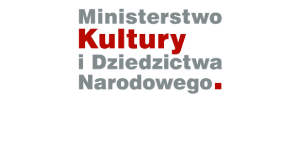Lutosławski hesitant and direct
The history of Polish contemporary music revolves around great names, and the concert in the Resounds. New Polish Music series is no exception. A natural reference point here seems to be Witold Lutosławski – a point indicated in a quite hesitant rather than a direct manner. The evening will open with the relatively rarely-performed Ten Polish Dances (1951), a 15-minute suite based upon Silesian and Kashubian folklore. Lutosławski repeatedly deprecated this current of his work, which he treated as an escape from the authorities’ pressure in the period of socialist realism. Yet these works still retain a kind of charm and many performers and listeners have entered the world of contemporary music this way. Ten neoclassical miniatures, light and witty in rhythm and instrumentation, are a good warm-up for both listeners and musicians.
The highlight of the program is Andrzej Krzanowski's Symphony No. 2 (1983–84), although this is not so obvious. Written for a string rather than symphony orchestra, the symphony is also chamber in character. Its origin story points to another patron: the piece was commissioned by and dedicated to Elżbieta and Krzysztof Pendereccy and had its first performance at the festival in Zakliczyn. Yet eminent Polish music scholar Adrian Thomas suggests that the work shares many textural similarities with Lutosławski's Preludes and Fugues, composed a decade earlier. Both Lutosławski’s and Krzanowski’s works are characterized by modern polyphony and unhurriedly unfolding dramaturgy.
As the composer himself wrote: "Architecturally, the structure of the piece is based upon the juxtaposition of three movements, the first of which, Con vigore, serves as an introduction, the second movement, Comodo, is a freely shaped sonata allegro, and the third movement, Lento appassionato, exhibits strong similarities to both the fugue and the concerto grosso form..." The three magical "c" words that have characterized compositional strategies for centuries are: counterpoint, contrast, and concertare. These are manifested in the relationships between the string parts and between the movements of the dense, over-twenty-minute piece.
Andrzej Krzanowski, who like no one else in the country attempted to reconcile the avant-garde sonorism with the new Romanticism, quoted the words of art theorist Herbert Read in the introduction to Symphony No. 2. "Originality is not the urge to be different from others, to produce the brand-new; it is to grasp (in the etymological sense) the original, the roots of both ourselves and things." These words became the motto for a whole generation of artists entering Polish music in the late 1970s – the Stalowa Wola generation, which was named after the festival at which its representatives made their debut. In Symphony No. 2, Krzanowski attempts to grasp the roots of this form (from the Italian sinfonia, consonance), but also establishes his own compositional style.
Would Martyna Kosecka concur with Herbert Read’s words? She is the youngest composer featured in the "Resounds" evening, forming a powerful female trio with the authors of the other premiere works of the series, Żaneta Rydzewska (December) and Teoniki Rożynek (March). Following the path of the artist for several years now, one could say that she would concur with Read. In her early works, Kosecka explicitly referred to the sonorist tradition of the Polish school, then she became fascinated with the spectral and Persian music, still searching for herself and her roots, she will certainly get closer to them at this concert, as Sinfonia Varsovia will be led by Szymon Bywalec, with whom the composer also studied conducting.
In her Concerto for Clarinet, Multipercussion, and Orchestra (2019), Martyna Kosecka also makes a nod to Witold Lutosławski’s Hésitant–Direct division of movements. "Hesitant" and "direct" – the Polish master of modernism developed this form in the 1960s and used it for example in the above-mentioned Preludes and Fugue. In Kosecka's piece, the two solo instruments play together in the first movement and compete with each other in the second one, as if their personalities were separating and emancipating themselves over the course of the piece. Like her other pieces, the concerto features many intriguing timbral and articulatory combinations and interesting harmony tinged with microtones.
Jan Topolski



